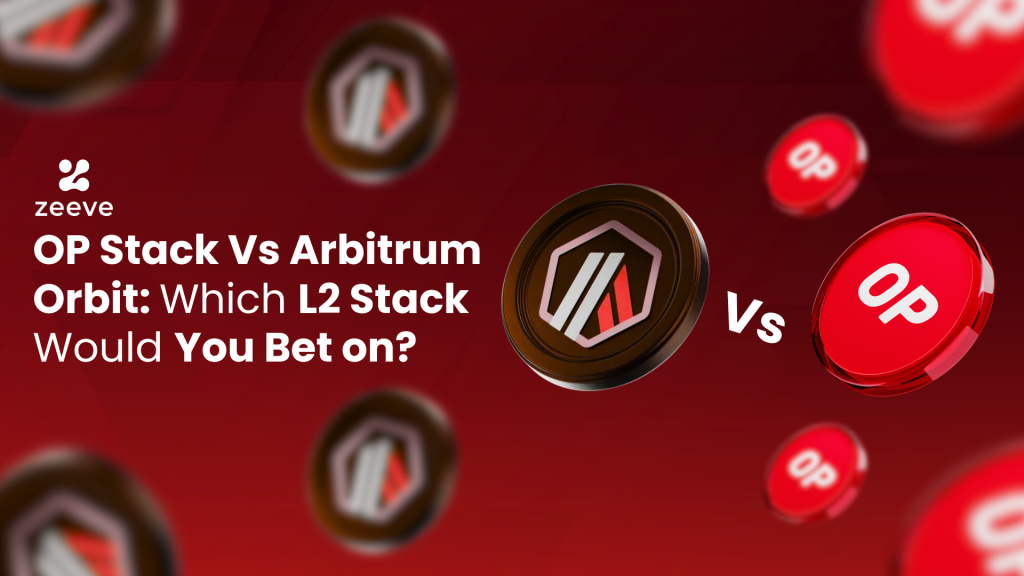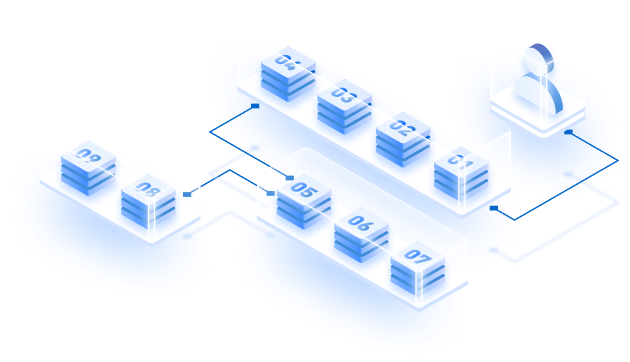Both Optimism and Arbitrum offer L2 scaling solutions, which means both focus primarily on improving transaction speed and reducing fees in the pursuit of more scalability.
Both of them have different tactical approaches. However, they share the same core traits, which involve Ethereum settlement and data availability.
So where does the difference lie? It lies in their architectural foundation. Optimism strictly aligns with the Ethereum network, using ETH as its gas token. Arbitrum, on the other hand, has a more flexible approach, rooted in chain-specific optimization.
So, in essence, both are innovating, but they take different approaches to custom stack innovation. With Arbitrum, the focus is on fast withdrawals and L3 strategy. However, Optimism’s vision is deeply entrenched in Superchain integration. This has led them to take different paths to evolution.
And when you consider the popularity, among the top 10 Ethereum L2 projects, six use OP Stack. As for the Arbitrum ecosystem, there were over 50 Arbitrum chains in development in 2024, a number that continues to increase. Now the question is: which one is better?
Should one stick to the OP Stack that adheres to the standard Ethereum approach, or choose Arbitrum, an ecosystem trying to establish more freedom thanks to its L3 chains?

A Look into Optimistic Rollup
Before this deep dive, let us get the fundamentals straight. Optimistic rollup is an L2 scaling solution for Ethereum that relies on optimistic assumptions. An optimistic assumption, in this sense, means assuming transactions are valid as long as no one objects to them for 7 days.
For instance, if someone objects to them using fraud proofs, the system is sent into a fault-proof mode. This results in the specific transaction being rerun, followed by result verification. Result matching happens afterward. If fraud in the transaction is proven, the fraudulent transaction batch is rejected, rewarding the challenger and penalizing the one who initiated the transactions.
They are very dissimilar to ZK rollups. In ZK rollups, validity proofs focus on mathematical guarantees, and withdrawal times are instant. Overall, they are faster than optimistic rollups.
Still, optimistic rollups are chosen due to the maturity of the ecosystem, EVM compatibility (ZK rollups are close to becoming compatible too), and fraud proofs, which are less computationally intensive than ZK rollups.
Optimistic rollup is what’s adopted by both Arbitrum Orbit and OP Stack.
What is OP Stack?
OP Stack is a set of software powering Optimism and is geared towards the concept of Superchains, which is a vision to create a shared, open-source ecosystem for L2 blockchains.
Therefore, it can be said that the task of the OP Stack goes far beyond creating an L2 blockchain, meaning it will evolve to provide new use cases.
The current iteration of OP Stack: Optimism Bedrock. Optimism Bedrock provides tools for launching an Optimism rollup blockchain, and the APIs are tightly coupled with this rollup configuration.
Bedrock is another initiative towards developing the Superchain, which is a proposed network of L2s that share a common development stack, communication layer, and security features.
Is there a difference between OP Stack chains and Ethereum? Yes. There are four core differences:
1. Bridging: Due to this, deposit transactions exist in L2 but not in L1, and withdrawal transactions prove the L2 rollup to the L1.
2. Transaction Fee: Transactions on OP Stack pay for an L1 data fee on top of the standard execution gas fee, and transactions are computed via the EIP-1559 mechanism.
3. Mempool Roles: OP Stack does not feature a public mempool. The one it does have is only visible to the sequencer.
4. Chain Finality: OP Stack contains unsafe, safe, and finalized heads indicating the finality of the L2 block.
Components of OP Stack
Here are the core layers of an OP Stack:
Data Availability Layer
Defines where the raw inputs of a chain based on OP Stack are published. It has a significant impact on the security model, as chain syncing could be impossible if a certain piece of data is not accessible from the data availability layer. Ethereum is a widely used DA module on OP Stack, and it contains Ethereum calldata, events, and EIP-4844 data blobs.
Sequencing Layer
It collects user transactions from the OP Stack chain and publishes them to the data availability layer. Transactions are handled by a single sequencer in a default rollup, which features a dedicated actor with the ability to act as sequencer. The other type of sequencer is the multiple sequencer model, where the sequencer is selected from a predefined set of possible actors.
Derivation Layer
The derivation layer defines how the raw data in the data availability layer is formed before being sent to the execution layer. It uses the current system state and derives Engine API inputs via the rollup module.
The rollup module derives Engine API inputs from Ethereum block data, deposited transaction events, and sequencer transaction batches. Another module is the indexer module, which also derives Engine API inputs, but does so when transactions are sent to, events are emitted by, or storage is modified in specific smart contracts on the data availability layer.
Execution Layer
The execution layer defines the state transition function that mutates the state. The state transitions are triggered when inputs are received from the derivation layer via the Engine API.
Settlement Layer
The settlement layer defines how OP Stack chains are represented on external blockchains. It is read-only, meaning third-party chains can observe and make decisions based on OP Stack’s state but cannot alter it directly. The layer supports attestation-based fault proofs, where specific entities propose a view of the chain’s state. If no one challenges it within the allowed time, the proposal is accepted as valid.
In more advanced configurations, the multisig model is replaced by a permissionless fault-proving process, which shifts trust to the design of the proof system itself. OP Stack also supports validity proof settlement, where mathematical proofs confirm the correctness of the proposed state. This layered approach allows OP Stack to interoperate securely with other ecosystems while supporting both optimistic and cryptographic verification methods.
Governance Layer
The governance layer features a general set of tools and processes to manage upgrades, system configuration, and design decisions. Simply put, it is a relatively abstract layer containing multiple mechanisms that can target the OP Stack chain and third-party chains that impact other layers.
OP Stack Transaction Mechanics
Here is the complete breakdown of the OP Stack transaction mechanics.
OP Stack Transaction Flow
The flow starts with the transaction being written on L1, which is done using OP-Batcher. However, this step can be bypassed, as any user can send an L1 transaction to submit an L2 transaction. During execution, the transaction modifies the state, which is handled by OP-Geth. Once a transaction is written on L1, the OP proposer writes a commitment to post the transaction state on L1.
Writing a Transaction on L1
Writing a transaction requires OP-Batcher, which compresses the transaction into batches and then posts those batches to L1 to ensure integrity and availability. For compression, OP-Batcher aggregates sequencer batches into channels. When the channel is full or times out, it is compressed. Once a channel’s compressed size equals the L1 transaction size, it is considered full. Whether or not it is full is determined by the L1 transaction size and the compression ratio.
State Processing
Once a transaction is written, it is processed in two steps. The first step involves applying transactions from the old state to produce a new state, which OP-Geth handles. And in the second step, the OP proposer then creates a new Merkle root.
OP Stack Transaction Finality
Finality on OP Stack mirrors Ethereum’s progression through unsafe, safe, and finalized states. Once a user submits a transaction, the sequencer includes it in a block and shares it across the P2P network. At this stage, the transaction is still considered unsafe. It becomes safe once the data is posted to Ethereum, either as calldata or blob data. Full finality is reached when the Ethereum block containing the transaction is finalized, which is typically after two epochs, or about 12.8 minutes from the original submission.
OP Stack Fault Proof System
Fault proofs are a core part of OP Stack, letting users freely propose and challenge the L2 chain’s state, especially for proving withdrawals. Introduced on June 10, 2024, this upgrade pushed decentralization forward by removing the need for trusted third parties and enabling L2-to-L1 messaging. It also brought a modular design, making it easier to plug in new proving mechanisms over time. The system runs on three key components that support secure, trustless bridging without any central fallback.
Fault proof program
It runs the rollup state transition to verify an L2 output from L1 inputs and contains both parts of the protocol: op-node and op-geth, in a single process. Its purpose is to retrieve data via the preimage Oracle API.
Fault proof virtual machine
The Fault Proof VM is designed for modularity and composability. It runs independently from the fault proof program, so it’s unaffected by changes in Ethereum’s protocol. When updates happen, the FPP simply imports the new logic.
The VM handles low-level instruction execution with minimal requirements, following a simple read-interpret-execute cycle much like a CPU thread. To support data verification, it interacts with the preimage Oracle through specific system calls, letting programs request hashes and read preimage data in small chunks as needed.
Dispute Game Protocol
The Dispute Game Protocol, powered by Cannon (the default fault-proof machine in OP Stack), functions like a turn-based courtroom where two parties face off. The Challenger believes the submitted state is invalid, while the Defender maintains it is correct. After the sequencer submits a batch of transactions and its resulting state root to Ethereum, a 7-day challenge window opens for anyone to dispute the state.
The process is interactive and progresses in rounds. Through a binary search approach, each party presents the state before and after specific transactions to pinpoint the disagreement. Once the exact disputed step is found, it is executed on Ethereum L1. If fraud is detected, the batch is reverted and the sequencer is penalized. If not, the sequencer is cleared and the Challenger risks losing their bond.
Optimism Superchain
Optimism’s long-term vision is to create a network of interoperable L2 chains known as the Superchain. The tools to create it will have a common infrastructure and common governance, which the OP Stack provides.
All Superchain members use the same core stack (Optimism Bedrock), which enables shared upgrades, coordinated governance, and seamless developer migration across chains.
One of the core use attributes of the Superchain, which is still in development, is cross-chain communication. It means supporting native, trust-minimized messaging between Superchain members without the need for any third-party bridges. Full Superchain interoperability is still under development but remains a core roadmap priority.
In the future, the plans are to implement a shared sequencing system and collective governance model to further the decentralization agenda regarding control over the rollup network.
The chains in the Superchain ecosystem contribute to and benefit from Optimism’s Retroactive Public Goods Funding (RPGF) model — a funding system that rewards contributors after impact is proven.
Among the many emerging ecosystems following this paradigm is Worldcoin. On April 24, 2024, Worldcoin announced its migration to the OP Stack, committing to help scale and support the Superchain ecosystem.
superchain spotlight ✨ : @worldcoin edition
— Optimism (@Optimism) May 20, 2025
mini apps are quietly becoming one of the most powerful onchain distribution engines.
tens of millions of verified people.
daily app usage.
instant onboarding.
start building one today ↓ pic.twitter.com/S04d4Ld4FU
This endorsement, which was helmed by Sam Altman, showcased institutional confidence in OP Stack’s long-term modularity and scalability. Furthermore, this migration signaled real-world adoption.
When it comes to the core components of the Superchain, it integrates Ethereum’s Prague (Pectra) features into the OP Stack for full L1 alignment while embedding withdrawal roots in block headers, improving fault-proof transparency and security.
It also introduces a new operator fee model to support Alt-DA and future ZK rollup modes. Additional improvements include the standardization of the dispute game deployment for chains using permissionless fault proofs.
This upgrade was activated in May 2025 on mainnet, as part of the OP Stack’s 48-hour sync with Ethereum upgrades. What followed was a Superchain withdrawal pause test on May 14.
Additional Perks of the OP Stack
Here are some of the other additional elements of OP Stack:
OP Flashblocks
Flashblocks divide each block into four smaller parts and stream them every 250 ms for near-instant confirmations. As these partial blocks arrive, clients execute them immediately without waiting for full block finalization, which significantly reduces latency. Once all partials are in, the system computes the state root just once and applies it across the full block, enabling efficient live-streamed execution.
OP altDA
OP altDA offers off-chain data availability with on-chain guarantees by letting chains post batch data to alternative DA layers, while only submitting a cryptographic proof to Ethereum. It’s an experimental feature under MTR license, currently for testing and feedback. While cost-effective and compatible with various DA layers, it introduces a new trust layer, relying on operators to correctly post and reference data.
OP Succinct
OP Succinct is a combination of SP1, which is a general-purpose zkVM, and OP Stack. It is designed to upgrade any OP Stack chain within an hour. It features fast finality that is secured by ZKP’s proving latency, which can be completed in tens of minutes. Cost-effective as it reduces transaction costs by a factor of 10, it is considered excellent for rollup teams due to its high level of customization and easy maintainability.
Custom VM Diagnostic Dispute Resolution
This feature from OP Labs is part of the Dispute Game Framework and helps test how modular fraud proofs can work with different virtual machines. It’s mainly a debugging tool that traces how a custom VM reached a disputed state, though it’s not yet used in live dispute resolution. Its goal is to verify if custom VM logic is ready for broader integration into OP Stack’s fault-proof system. Ultimately, it pushes OP Stack toward supporting multi-VM L2 rollups, allowing developers to build ZK or fault-compatible chains that still connect to Optimism’s dispute system.
No Custom Token
One notable trade-off with OP Stack is the lack of support for custom tokens. That is by design, as OP Stack treats itself as neutral public infrastructure rather than a platform tied to any specific token economy. As a result, ETH remains the native token. Still, it stays community-focused through Retroactive Public Goods Funding (RPGF), a model that rewards valuable contributions after the fact and keeps the ecosystem aligned with shared impact over individual incentives.
What is Arbitrum Orbit?
Arbitrum Orbit is a framework for building customizable L2 and L3 chains on the Arbitrum Nitro architecture. It supports sovereign governance, custom gas tokens, and modular data availability. Orbit chains can operate in Rollup mode (settling on Ethereum) or AnyTrust mode (using DA committees for lower cost), and they inherit performance benefits from Nitro.
What are the Components of Arbitrum Orbit?
To better compare OP Stack with Arbitrum Orbit, it is important to visualize it in a similar fashion because that’s how the difference emerges.
Data Availability Layer
With Orbit chains, users have support for multiple DA options. They can choose the Rollup Mode, which publishes transaction data to Ethereum directly using calldata or EIP-4844 blobs. With the AnyTrust mode, users get a system that involves a Data Availability Committee (DAC) that posts only a certificate on-chain, reducing cost.
Finally, third-party DA integration is also allowed on Arbitrum Orbit. Enabled using a pluggable DA interface, Arbitrum Orbit can merge with Celestia, Avail, NEAR, or others.
Sequencing Layer
For this layer, Orbit chains use a sequencer node to order, compress, and broadcast user transactions. It supports soft finality through a real-time sequencer feed and implements elastic block times, meaning blocks are only created when needed. This decreases overhead during low activity.
Derivation Layer
Thanks to being built on Arbitrum Nitro architecture, Orbit chains derive their internal state from transaction batches posted to the DA layer. It inherits Nitro’s parsing, batching, and pre-processing logic to enable smooth transaction handling.
Execution Layer
Within the execution layer, Orbit chains run on Nitro’s WASM-based VM, integrating a modified version of Geth for compatibility.
The EVM+ execution is supported through Stylus, which lets developers write smart contracts in Solidity or Rust.
Settlement Layer
There are two ways for Orbit chains to settle a transaction. The first approach is to settle directly to Ethereum (L2 behavior), or settle to an existing L2 like Arbitrum One or Nova (L3 behavior), which leads to the creation of multi-layered rollup hierarchies.
AnyTrust chains, however, have a different approach, settling using DAC certificates and including fallback mechanisms in case of failure.
Governance Layer
How is Arbitrum Orbit governed? The Orbit chains are fully sovereign and customizable. Developers have the power to define their own governance mechanisms, permissioning systems, upgrade rules, and native fee tokens. There is no underlying DAO—every Orbit chain is its own entity and governs according to its own core rules.
Fraud-Proof and Dispute Resolution
For fault-proof and dispute resolution, Orbit chains inherit interactive fraud-proof mechanisms from Nitro. This streamlined approach resolves disputes by narrowing down to a specific state transition step using a binary search-style challenge process.
Customization and Isolation
Modularity is the core attribute of Orbit chains. They let users choose their own gas token and define throughput limits, privacy features, pre-compiles, and permission settings. This level of modularity enhances the usability factor of Arbitrum Orbit, enabling the design of use cases like DeFi, gaming, NFTs, and app-specific rollups, which could be L2 or L3 chains.
Arbitrum Orbit Transaction Mechanism
Below is the complete transaction flow within Arbitrum Orbit.
User Sends Transaction to Sequencer
Users broadcast transactions to the Orbit chain’s sequencer, which can happen directly or through a frontend dApp. The sequencer then collects transactions into a mempool, prioritizing them based on fees or custom logic.
Sequencer Orders and Batches Transactions
Once the sequencer receives the transactions, it orders, compresses, and batches them into Layer 2 blocks. These batches are formatted according to Arbitrum Nitro’s specification, because the next step is to transfer them to a Nitro Virtual Machine.
Execution by Nitro VM
Once batches are passed to the Nitro VM (WebAssembly-based), each transaction is replayed, applies changes to the L2 state, and ensures validity and consistency using the EVM-compatible engine. Orbit chains can optionally use Stylus to execute contracts written in Rust or C++.
Posting to the Data Availability Layer
After execution, transaction data is posted to the Data Availability layer, which can be Ethereum, a DAC, or third-party DA chains like Celestia or Avail.
State Commitments Posted On-Chain
A state root commitment, which is the post-transaction state, is posted to Ethereum or the parent L2. The commitment includes the block hash, state hash, and accumulator updates.
Fraud-Proof Window
If the fraud-proof window is enabled, then in Rollup mode, state commitments are subject to challenge using interactive fraud proofs. Validators can submit challenges to prove that a given batch or state transition is invalid. If the challenge succeeds, the state is reverted and the sequencer is penalized.
Finalization
After the challenge window expires, which is generally 7 days, and if no disputes are raised, the block and state transitions are considered finalized on Layer 1. In AnyTrust mode, finality depends on DAC quorum and fallback mechanisms.
L3 Variant
If Orbit chains are deployed as an L3 chain, they settle to an L2 like Arbitrum One or Nova, post batches and state commitments to the parent L2 instead of Ethereum, and inherit the L2’s finality and data availability logic.
Arbitrum Fault Proof System
Arbitrum’s fraud proof system is fully built into the Nitro stack, using WASM for efficient execution and a modular setup for flexibility. It follows an optimistic model where all state assertions are treated as valid unless challenged.
Binary Bisection Protocol
Disputes are resolved through a binary bisection process that narrows the disagreement down to a single computation step. This is where the challenger submits a one-step fraud proof directly on-chain, and Ethereum smart contracts handle the verification. Validators must stake collateral to participate. If the challenge is valid, the batch is reverted and the incorrect party is slashed. If not, the assertion stands and the challenger may lose their bond. This structure keeps participation honest and permissionless.
Challenge Window and Finality
Once a validator posts a state assertion to Ethereum, a 7-day challenge window opens. If no challenge is raised or the dispute is resolved, the assertion is finalized. In Rollup mode, this provides full Ethereum-level security. In AnyTrust mode, finality depends on DAC behavior unless recovery mode is triggered.
BoLD Protocol
Introduced in February 2025, BoLD (Bounding Liquidity Delay) made the system fully permissionless and time-bounded. It sets a strict window that involves two challenge periods plus two extra days, around 16 days total, for anyone to submit or contest a claim. With BoLD, fraud proofs are enforced entirely through smart contracts, removing the need for external validators and making the system truly decentralized.
Arbitrum BoLD Protocol Goes Live: Enhancing Security and Decentralization
— Yudha (@yu_sap) February 12, 2025
The Arbitrum ecosystem has taken a monumental step forward with the launch of the BoLD (Bounded Liquidity Delay) Protocol on its mainnet, specifically on Arbitrum One and Arbitrum Nova. This move,…
BoLD is now live on mainnet and is a major milestone in Arbitrum’s move toward Stage 2 rollup status. It reinforces the network’s commitment to decentralization, trust minimization, and a fully open dispute resolution process.
Additional Perks of Arbitrum Orbit’s Ecosystem
Arbitrum Stylus
Stylus is Arbitrum’s WebAssembly-based execution environment that runs in parallel with the EVM, enabling developers to write smart contracts in Rust, C, and C++ alongside Solidity. It offers 10–100x cheaper execution by leveraging Nitro’s optimized VM stack and provides greater memory and compute resources, making it ideal for high-performance dApps like AI, games, and simulations. Stylus supports familiar systems programming toolchains and ensures memory safety, strong typing, and smooth integration with existing EVM contracts.
Arbitrum Orbit Rollup Operation Mode
In Rollup mode, Arbitrum chains post all transaction data and state roots directly to Ethereum L1, ensuring maximum security and enabling independent state reconstruction. While this approach provides full trustlessness and censorship resistance through fraud proofs and canonical chain rules, it comes with higher gas costs. Any user can run a node, challenge invalid assertions within a 7-day window, and contribute to validating the chain’s correctness, as seen in Arbitrum One.
Arbitrum AnyTrust Mode
AnyTrust mode reduces costs by posting only lightweight DA certificates to Ethereum, relying on a small Data Availability Committee (DAC) to hold actual data. While this lowers trust assumptions slightly, a fallback mechanism ensures full data recovery by halting the chain and reverting to Rollup-level security if needed. This mode supports faster finality and is best suited for high-volume, lower-security applications like games and social apps, with fraud proofs still available to maintain correctness. Arbitrum Nova operates using this mode.
Arbitrum L3 Chains
Arbitrum L3 chains are blockchains that settle on Arbitrum L2s (like Arbitrum One or Nova) instead of Ethereum directly. As part of the Orbit framework, they inherit Ethereum’s security and L2 performance, forming a layered model: Ethereum acts as L1, Arbitrum One/Nova as L2, and Orbit chains as L3. While structurally similar to L2s, L3s differ by settling and executing through L2 intermediaries, creating security and operational distinctions. Data availability and consensus are still rooted in Ethereum, but L3 chains must route withdrawals through their L2 parent before reaching Ethereum.
Architecture, Tooling & Roadmap
Orbit L3 chains are built on Nitro and support Stylus, allowing developers to use EVM, WASM, and high-performance languages like Rust and C++. These chains are highly customizable. Developers can define gas tokens, governance rules, precompiles, and DA sources (e.g., Ethereum, Celestia). Upcoming features include BoLD support for permissionless dispute resolution, faster exits using validator committees, and new bridging methods for direct Ethereum-to-L3 onboarding, eliminating L2 as a necessary intermediary.
Arbitrum’s Universal Intents Engine
In the first quarter of 2025, a universal intents engine was introduced to enable sub-3-second chain swaps and transfers across chains. Essentially, it allowed users to express outcomes without specifying the execution steps.
4/ But this goes beyond Arbitrum. @OffchainLabs is working alongside the Ethereum foundation and other partners in the ecosystem.https://t.co/5Z4pF67RKX
— Arbitrum Developers (@ArbitrumDevs) February 7, 2025
This was introduced as a way to bring interoperability for Arbitrum and Ethereum. It has four core attributes. The first one is the message standard, which defines how to encode user intents consistently (e.g., ERC‑7683/7786). Then comes the broadcast standard, which secures contracts for relaying intents across chains. The third perk is fast settlement, which involves using fast withdrawals, bridges, and potentially native ZK proofs. And the final part is the intents dissemination feed, where users publish intents and solvers monitor them.
It Uses a Solver Competition Model
When a broadcaster issues an intent, such as transferring 2,000 USDC from L2 to L3, it is shared publicly for Solvers to see. These independent Solvers compete to find the most efficient way to execute it. The winner is reimbursed through bonded funds or escrow, depending on the setup. While the process is abstracted from the user, the execution remains verifiable and trust-minimized, built on top of Arbitrum’s core security model.
Difference in the Fault Proof System of OP Stack and Arbitrum
OP Stack’s fault-proof system is modular and permissionless, featuring three components: the Fault Proof Program (FPP) for executing full node logic, the protocol-independent Fault Proof VM, and the Cannon-powered Dispute Game Protocol, which uses on-chain binary search for resolving disputes. It is designed for multi-VM compatibility.
In contrast, Arbitrum Orbit employs Nitro’s WASM-based binary bisection model, culminating in one-step proofs verified on Ethereum. With the BoLD protocol, Arbitrum’s system is now fully decentralized, permissionless, and time-bounded, focusing more on performance and decentralization than OP Stack’s flexibility and modularity.
Node Infrastructure Difference Between OP Stack and Arbitrum
OP Stack is built using OP-Geth for execution and op-node for rollup logic, with a private sequencer mempool and a finality system featuring unsafe, safe, and finalized heads. Tools like OP Flashblocks enhance responsiveness by streaming partial blocks.
Arbitrum Orbit runs on Nitro, combining Geth and WASM with elastic block timing, L2/L3 support, and Stylus for enhanced validation. While OP Stack aims for a structured, unified Superchain vision, Arbitrum favors decentralized flexibility with support for custom infra, third-party DA, and WASM-native execution.
VM Architecture
OP Stack relies on OP-Geth, a lightly modified Ethereum EVM supporting only Solidity, but with future extensibility via diagnostic tools for custom VMs.
Arbitrum Orbit, powered by Nitro and Stylus, supports Solidity, Rust, C, and C++, offering faster, cheaper execution through WASM, parallel processing, and extended hardware control. The contrast lies in ethos: OP Stack prioritizes compatibility and standardization, while Arbitrum embraces multi-language, high-performance execution for advanced dApps.

Which One to Choose?
If you’re aiming for a streamlined, Ethereum-aligned build with predictable rules and a growing shared ecosystem, OP Stack is the way to go. It’s built for teams that value long-term structure, modular upgrades, and simpler governance under the Superchain vision. Projects like Worldcoin choosing OP Stack show real-world confidence in that roadmap. Plus, its permissionless fault-proof system and clear finality model make it a strong fit for developers who want a clean, standards-driven experience without surprises.
But if your focus is flexibility, experimentation, and building something outside the norm, Arbitrum Orbit gives you more creative freedom. With custom gas tokens, full control over governance, WASM execution through Stylus, and full L3 support, it’s designed for developers who want to push boundaries. Its Universal Intents Engine simplifies cross-chain actions, and with BoLD live, it offers one of the most decentralized fraud-proof setups today. For high-performance or app-specific chains, Orbit hands you the entire toolkit.
FAQs
What is the core difference between OP Stack and Arbitrum Orbit?
OP Stack follows a standardized, Ethereum-aligned architecture while focused on building a Superchain. Arbitrum Orbit, on the other hand, focuses on chain sovereignty, modular tooling, and support for custom L2 and L3 chains.
Can I use a custom gas token on OP Stack or Arbitrum Orbit?
Only Arbitrum Orbit supports custom gas tokens. OP Stack enforces ETH-only gas to maintain uniformity and ETH neutrality across the Superchain.
What programming languages are supported on both platforms?
OP Stack supports Solidity only. Arbitrum Orbit, with Stylus, supports Solidity, Rust, C, and C++, allowing more versatile smart contracts.
Which platform supports L3 chains?
Only Arbitrum Orbit supports L3 chains that settle on L2s like Arbitrum One or Nova. OP Stack does not currently support L3 deployments.
How do fault proofs work on each platform?
OP Stack uses a modular, multi-VM dispute system powered by Cannon. Arbitrum Orbit uses Nitro’s binary fraud proof system, recently upgraded with the BoLD protocol for full decentralization.
Is data availability more flexible on one platform over the other?
es, Arbitrum Orbit supports Ethereum, AnyTrust DACs, and third-party DA layers like Celestia. OP Stack supports Ethereum DA by default, with Alt-DA in early stages.
What is the Universal Intents Engine in Arbitrum?
It allows users to express cross-chain intents without detailing execution paths. Solvers compete to fulfill these intents efficiently within seconds.
Which is better for developers building high-performance apps?
Arbitrum Orbit is better for high-performance dApps due to WASM execution, Stylus support, and flexible L3 design. OP Stack is more suitable for Ethereum-aligned dApps seeking stability.




